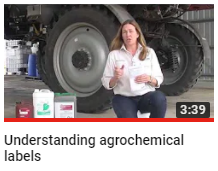While agrochemicals are an important component of many pest management programs, care must be taken to ensure that any spray operations use registered products that are applied according to the product label.
The manager of an Emerald farm has recently been fined $10,000, pleading guilty to a breach of the Chemical Usage (Agriculture &Veterinary) Control Act 1988 after significant levels of dimethoate residues were found in routine sampling in 2016*.
Product labels include a wide range of directions for use regarding registered crops and target pests, appropriate rates, withholding periods, and other application instructions, all of which can vary from state to state. The labels are legal documents, and the instructions included are legally enforceable.
To comply with the label, some of the things to consider include:
- Confirming the product is registered for the targeted pest and crop in your state
- Checking recommended application rates for the area/volumes/equipment you plan to use
- Ensuring the withholding period is less than the time to harvest/grazing
- Following all other restraints and critical comment information, including weather restrictions, buffer zones, and other situational requirements

Example of a small segment of a product label; application rates and restrictions can vary between pests, crops and even states. Always ensure that your spray parameters are applicable to your situation, and that you keep appropriate records of all spray operations.
Make sure you have read all the label requirements – some products include a small information booklet in addition to the label glued to the packaging. If the label writing is too small, your reseller can provide the information in larger font size.
Ask your agronomist or reseller for assistance if you have any queries or need clarification about the product label or any of its requirements.
 Further information
Further information
In this video, Mary O’Brien explains the usual components within a label, and highlights some of the common assumptions that can lead to mistakes by users.
*Note: The Australian Pesticides and Veterinary Medicines Authority (APVMA) is responsible for regulating pesticides up to their point of sale. State and territory governments are then responsible for controlling the use of these chemicals. The case mentioned above was prosecuted under Queensland law.

